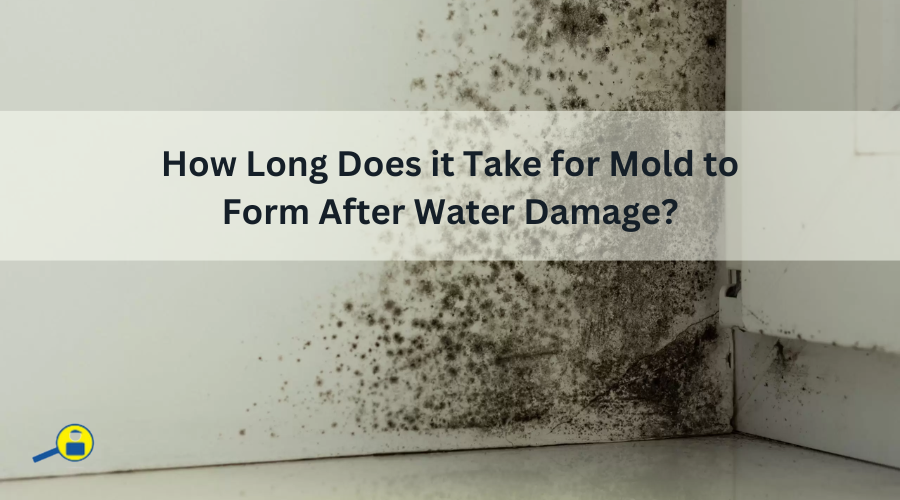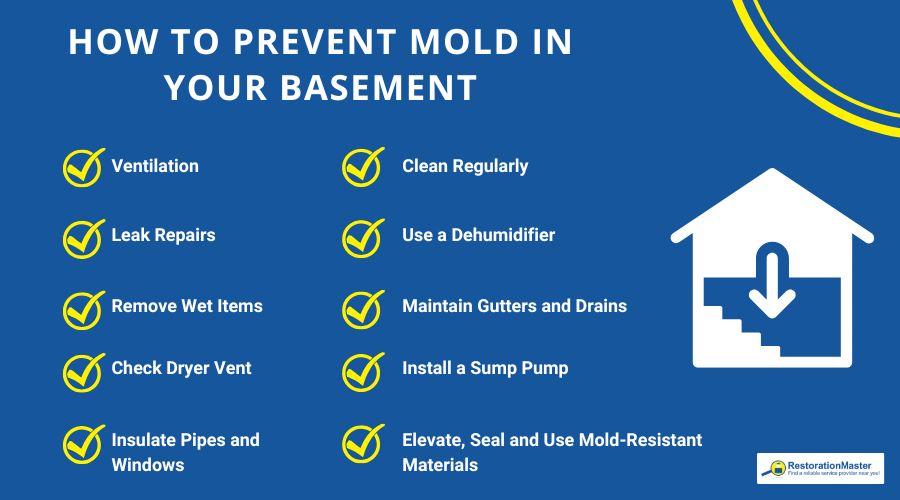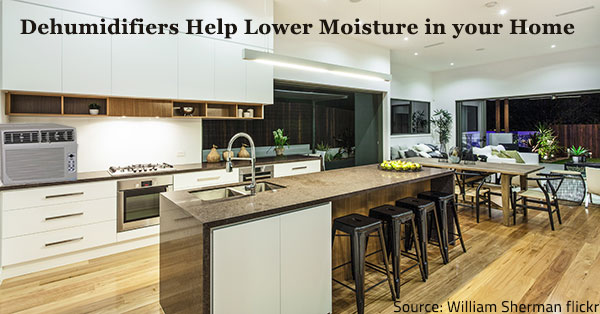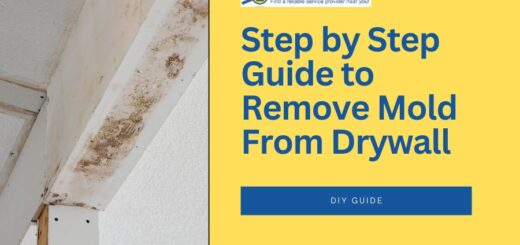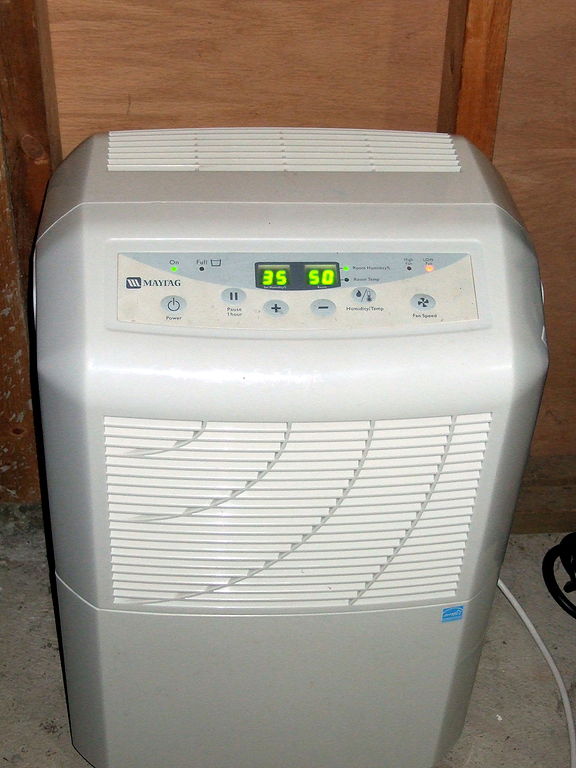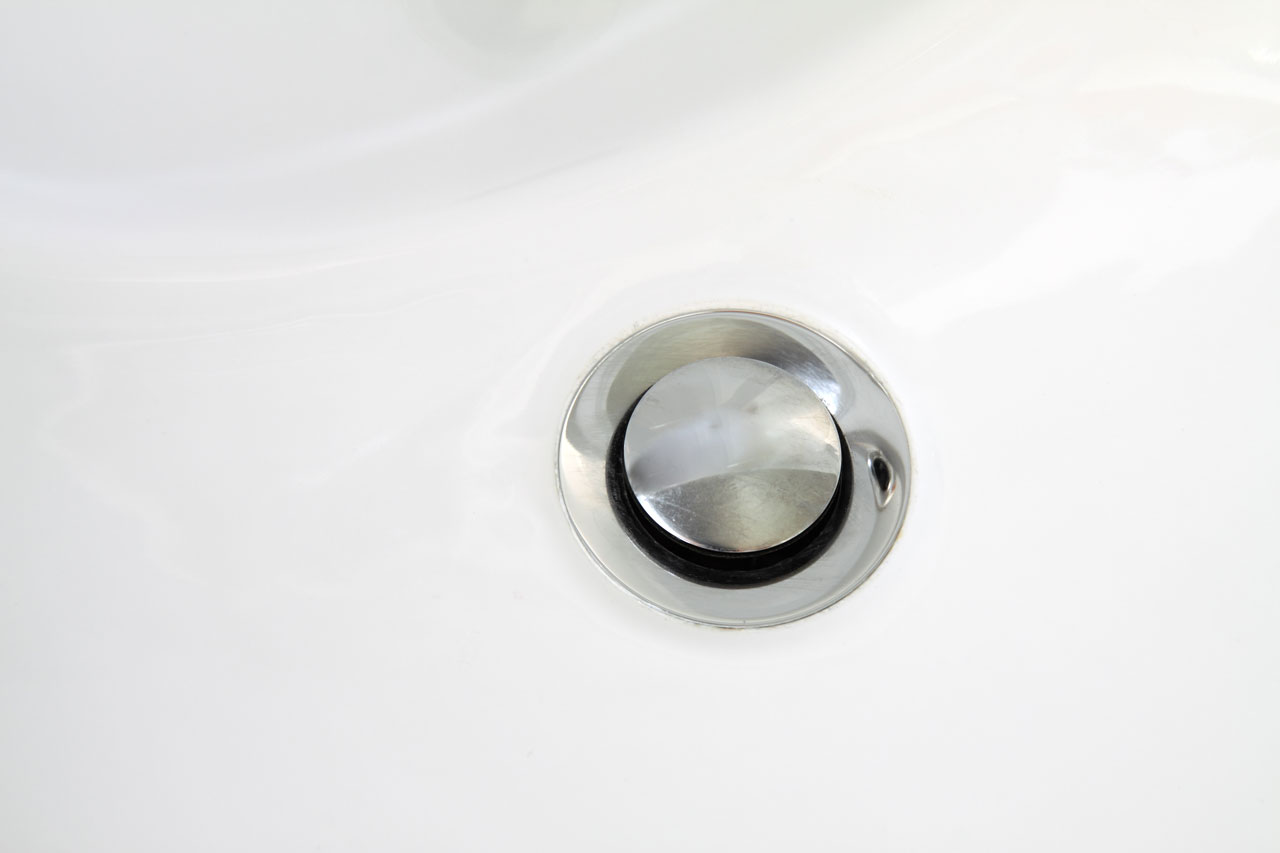Effective Strategies for Black Mold Mitigation in Homes
Are you noticing a musty smell or seeing dark, fuzzy patches in damp areas of your home? If so, you are likely dealing with a black moldMold is a type of fungus that grows in damp or humid conditi... More problem, a frequent challenge in many households. Our comprehensive guide taps into expert recommendations, including those from the United States Environmental Protection Agency, to offer you effective strategies for battling black moldMold is a type of fungus that grows in damp or humid conditi... More. We’ll discuss identifying moisture problems, whether from water damage, leaky plumbing, or floods, and provide actionable steps for mold remediationMold remediation is the process of identifying, removing, an... More and preventionPrevention refers to actions taken to reduce the likelihood ... More. By delving into this guide, you’ll uncover how to keep your home safe and clean, ultimately protecting your health and property. Let’s confront and conquer the moldMold is a type of fungus that grows in damp or humid conditi... More menace together, ensuring it doesn’t darken your doorstep again.
Key Takeaways
- Effective black moldMold is a type of fungus that grows in damp or humid conditi... More mitigation hinges on moisture control and routine maintenanceMaintenance is the routine care, inspection, and repair of a... More
- Protective gear is crucial when handling moldMold is a type of fungus that grows in damp or humid conditi... More to prevent health risks
- For vulnerable groups like children and pets, mold-free environments are imperative
- Choosing mold-resistant materials can fortify homes against future moldMold is a type of fungus that grows in damp or humid conditi... More problems
- MoldMold is a type of fungus that grows in damp or humid conditi... More testing before and after remediation ensures thoroughness and safety
Understanding Black Mold and Its Effects on Homes
Identifying black moldMold is a type of fungus that grows in damp or humid conditi... More in your home demands vigilance. Signs like dark spots and a musty odorAn odor is a smell, often detectable by the human nose, whic... More point to its presence, often in damp spaces where water damage has occurred, beneath air conditioning units, or any area prone to moisture buildup. Understanding its prominence in these common areas is the first step in safeguarding your home’s integrity. Acknowledging the health risks for those exposed is crucial, as is recognizing when professional mitigation is necessary, potentially impacting insurance coverage. Our insight into these concerns, made accessible through approachable language, will guide you to a safer, healthier living environment.
Identifying Black Mold: Signs and Symptoms
Identifying black mold begins with recognition of the telltale signs that it has invaded your living spaces. In your home, keep an eye out for dark, irregularly shaped spots appearing on walls or ceilings, particularly in areas where dampness is common. A persistent damp or musty smell, especially in poorly ventilated rooms like attics or crawl spaces, often accompanies an infestation. Awareness of these symptoms is key, as black moldMold is a type of fungus that grows in damp or humid conditi... More can stealthily spread underneath floor coverings, behind wallpaper, or within roof materials if a leak goes unnoticed.
When examining your home for black moldMold is a type of fungus that grows in damp or humid conditi... More, examine any areas where water intrusion is a possibility. Search for discoloration in seemingly innocuous places, such as where the roof meets exterior walls or around window frames, as these could hint at hidden leaks. If you or your family members experience unexplained respiratory discomfort or skin irritation, these could be reactions to moldMold is a type of fungus that grows in damp or humid conditi... More exposure. Here’s a brief checklist to keep in mind:
- Inspect roof and attic for leaks and water damage.
- Check crawl spaces for excessive moisture and visible moldMold is a type of fungus that grows in damp or humid conditi... More growth.
- Note any musty odors or skin irritations as potential moldMold is a type of fungus that grows in damp or humid conditi... More indicators.
Addressing these issues swiftly can prevent larger problems down the line.
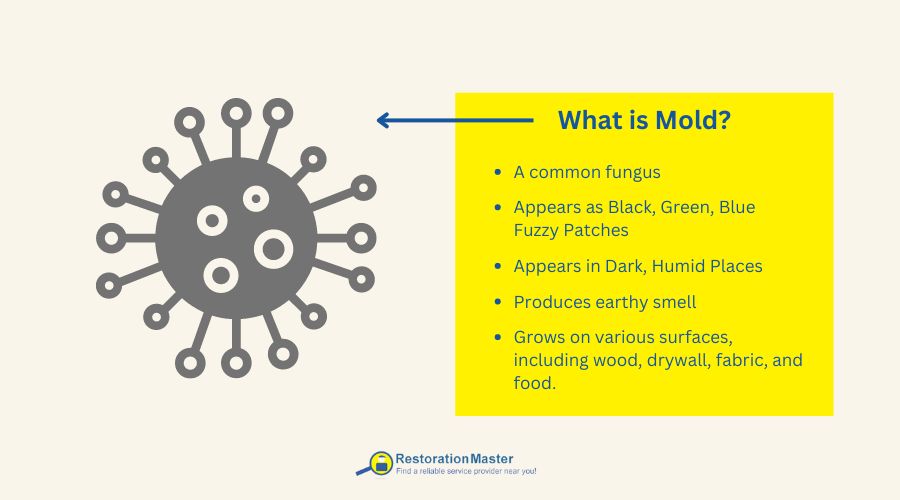
Common Areas Prone to Black Mold Growth
In my experience, the basement is a common battleground in the fight against black moldMold is a type of fungus that grows in damp or humid conditi... More due to its high humidityHumidity is the amount of moisture or water vapor present in... More levels and limited air flow. This environment creates a welcoming haven for moldMold is a type of fungus that grows in damp or humid conditi... More to thrive, potentially degrading indoor air qualityIndoor air quality (IAQ) refers to the condition of the air ... More and posing health risks to residents. As a homeowner, it’s essential to monitor your basement’s humidityHumidity is the amount of moisture or water vapor present in... More, use dehumidifiers if needed, and ensure proper ventilationVentilation is the process of exchanging or circulating air ... More to discourage moldMold is a type of fungus that grows in damp or humid conditi... More growth.
Another area requiring vigilance is the bathroom, where frequent water use and inadequate ventilationVentilation is the process of exchanging or circulating air ... More often leadLead is a heavy metal that can be toxic to humans, especiall... More to excessive moisture. Regular cleaning with appropriate solutions, such as a diluted bleach mixture, can stave off moldMold is a type of fungus that grows in damp or humid conditi... More proliferation. It’s imperative to fix any leaks promptly and consider upgrading exhaust fans to maintain optimal indoor air qualityIndoor air quality (IAQ) refers to the condition of the air ... More, thereby safeguarding the household’s health.
Health Risks Associated With Black Mold Exposure
Exposure to black moldMold is a type of fungus that grows in damp or humid conditi... More can precipitate a range of health complications, particularly for individuals with pre-existing conditions like asthma or mold allergies. When moldMold is a type of fungus that grows in damp or humid conditi... More sporesSpores are microscopic reproductive units of fungi or mold t... More circulate in the air—often emanating from damp drywall or other moisture-laden structures—they can trigger asthma attacks, leading to respiratory distress and other severe symptoms. In my professional opinion, understanding the links between moldMold is a type of fungus that grows in damp or humid conditi... More exposure and respiratory issues is a critical component of maintaining a safe home environment.
In more serious cases, prolonged exposure to molds, especially in high moisture areas, can leadLead is a heavy metal that can be toxic to humans, especiall... More to more pronounced diseases, not just allergies. Symptoms such as chronic fatigue, persistent coughs, or even bleeding in the lungs have been observed in some individuals. I have seen homeowners overlook the importance of addressing moldMold is a type of fungus that grows in damp or humid conditi... More issues quickly, a hesitation that can exacerbate potential health risks. Awareness and prompt mitigation are therefore paramount to protect the well-being of all home occupants.
Assessing Moisture Sources Leading to Mold Development
My approach to moldMold is a type of fungus that grows in damp or humid conditi... More mitigation centers on identifying and correcting underlying moisture problems. Detecting leaks and water intrusion points is vital, as these can serve as incubators for StachybotrysStachybotrys is a type of black mold (often called “black ... More chartarum, commonly known as black moldMold is a type of fungus that grows in damp or humid conditi... More. Evaluating indoor humidityHumidity is the amount of moisture or water vapor present in... More levels is another critical step; maintaining them within Centers for Disease Control and PreventionPrevention refers to actions taken to reduce the likelihood ... More (CDC) recommended ranges prevents moldMold is a type of fungus that grows in damp or humid conditi... More sporesSpores are microscopic reproductive units of fungi or mold t... More from taking root. Additionally, addressing poor ventilationVentilation is the process of exchanging or circulating air ... More, especially in areas like duct systems where air should circulate efficiently, is essential for thwarting moldMold is a type of fungus that grows in damp or humid conditi... More formation. Wearing personal protective equipment (PPE)Personal protection equipment (PPE) is safety gear such as g... More and employing ventilators during inspections safeguard health while these evaluations are conducted.
Detecting Leaks and Water Intrusion Points
In my professional assessments, pinpointing the sources of moisture that contribute to mold growth is fundamental. For instance, in your bathroom, the wood under the sink is commonly affected by leakage, which can promote the proliferation of black moldMold is a type of fungus that grows in damp or humid conditi... More sporesSpores are microscopic reproductive units of fungi or mold t... More if undetected. An integral part of the mitigation strategy includes a thorough inspectionInspection is the careful examination and assessment of a pr... More for any signs of water damage or discoloration on wood surfaces, indicating potential leaks that need to be promptly addressed to prevent further moldMold is a type of fungus that grows in damp or humid conditi... More development.
Using a dehumidifierA dehumidifier is a device that removes excess moisture from... More is another proactive measure I recommend, especially in areas prone to high humidityHumidity is the amount of moisture or water vapor present in... More levels which can foster an environment conducive to moldMold is a type of fungus that grows in damp or humid conditi... More. Identifying and remedying these conditions early, such as rectifying sewageSewage is wastewater containing biological and chemical cont... More pipe leaks and ensuring proper ventilationVentilation is the process of exchanging or circulating air ... More, can drastically reduce the presence of moldMold is a type of fungus that grows in damp or humid conditi... More sporesSpores are microscopic reproductive units of fungi or mold t... More, enabling homeowners to safeguard their living spaces against the insidious effects of black moldMold is a type of fungus that grows in damp or humid conditi... More.
Evaluating Indoor Humidity Levels
In my experience, monitoringMonitoring is the ongoing observation and measurement of con... More and managing indoor humidity levels is fundamental in black moldMold is a type of fungus that grows in damp or humid conditi... More mitigation efforts. Homes with high internal humidityHumidity is the amount of moisture or water vapor present in... More become breeding grounds for moldMold is a type of fungus that grows in damp or humid conditi... More sporesSpores are microscopic reproductive units of fungi or mold t... More, leading to potential infectionInfection is the invasion and multiplication of harmful micr... More risks. To avoid this, I utilize reliable hygrometers to ensure moisture levels remain below the 50% threshold recommended by health agencies, and I often advise the use of HEPA-filter air purifiers to help control moldMold is a type of fungus that grows in damp or humid conditi... More sporesSpores are microscopic reproductive units of fungi or mold t... More in the air.
For more comprehensive management, I also recommend professional services like SERVPRO that specialize in mold remediationMold remediation is the process of identifying, removing, an... More. These experts are adept at identifying hidden moisture sources within homes – from damp carpets to waterlogged clothing – and can deploy robust dehumidifying equipment to maintain a dry, inhospitable environment for black moldMold is a type of fungus that grows in damp or humid conditi... More. This proactive approach can save homeowners the hassle and health hazards associated with moldMold is a type of fungus that grows in damp or humid conditi... More outbreaks.
The Role of Poor Ventilation in Mold Formation
I’ve observed that poor ventilation is a critical factor in moldMold is a type of fungus that grows in damp or humid conditi... More formation, often going unnoticed during home improvement efforts. The stuffy air in enclosed spaces like basement storage areas or laundry rooms where a clothes dryer operates without proper exhaust systems can leadLead is a heavy metal that can be toxic to humans, especiall... More to an accumulation of moisture. Without consistent airflow to remove this dampness, the conditions become ideal for moldMold is a type of fungus that grows in damp or humid conditi... More to flourish on floors, walls, and other surfaces.
Diligent use of disinfectantA disinfectant is a chemical substance used to kill or inact... More in these areas is essential, but it’s not a standalone solutionA solution is a homogeneous mixture of two or more substance... More. From my experience, enhancing your home’s ventilationVentilation is the process of exchanging or circulating air ... More system strengthens the overall immune system of your living space against black moldMold is a type of fungus that grows in damp or humid conditi... More. For instance, installing exhaust fans in high humidityHumidity is the amount of moisture or water vapor present in... More areas and ensuring that air can circulate freely throughout your home, especially in attic and crawl spaces, can significantly reduce moldMold is a type of fungus that grows in damp or humid conditi... More risk and promote a healthier indoor environment.
Preventative Measures to Inhibit Mold Growth
To safeguard homes from the invasive nature of black moldMold is a type of fungus that grows in damp or humid conditi... More, I employ a multi-faceted approach to moldMold is a type of fungus that grows in damp or humid conditi... More preventionPrevention refers to actions taken to reduce the likelihood ... More. Ensuring indoor humidityHumidity is the amount of moisture or water vapor present in... More is well-controlled helps prevent the optimal conditions moldMold is a type of fungus that grows in damp or humid conditi... More requires to grow, particularly in moisture-heavy areas like the kitchen or shower. Effective ventilationVentilation is the process of exchanging or circulating air ... More strategies are key, especially in areas densely populated with furniture, which can trap moisture and sporesSpores are microscopic reproductive units of fungi or mold t... More. Prompt attention to repairRepair is the act of fixing or restoring damaged property, m... More leaks and water damage not only safeguards the lung health of residents but also the structural integrity of their environment. Moreover, integrating mold-resistant materials in home construction proactively fortifies against moldMold is a type of fungus that grows in damp or humid conditi... More issues, an essential practice endorsed by environmental protection advocates. These techniques form the cornerstone of sustainable moldMold is a type of fungus that grows in damp or humid conditi... More management, offering enduring benefits for household health and comfort.
Controlling Indoor Humidity Effectively
Reducing the moisture level can help manage indoor humidity which prevents the growth of black moldMold is a type of fungus that grows in damp or humid conditi... More as well as irritation and allergic reactions caused by exposure. By using dehumidifiers, I maintain humidityHumidity is the amount of moisture or water vapor present in... More levels at ideal conditions, generally below 50% as advised by the Institute of Inspection Cleaning and Restoration Certification (IICRC)The Institute of Inspection, Cleaning and Restoration Certif... More. This deliberate action limits the ability of moldMold is a type of fungus that grows in damp or humid conditi... More and mildewMildew is a type of fungus that grows on damp surfaces, typi... More to establish themselves, but also mitigates against dust accumulation that can exacerbate allergies.
Opting for the right kind of interior paint can also contribute significantly to managing moisture within the home. Paints designed to resist moisture and prevent the growth of black moldMold is a type of fungus that grows in damp or humid conditi... More add an extra layer of defense, creating surfaces less hospitable to fungiFungi are a group of organisms, including mold, mildew, and ... More. To this end, I always recommend products that have undergone rigorous testing and are certified by reputable institutions to ensure they contribute effectively to the overall moldMold is a type of fungus that grows in damp or humid conditi... More mitigation strategy:
- Selecting moisture-resistant paint for high humidityHumidity is the amount of moisture or water vapor present in... More areas.
- Regularly checking and maintaining dehumidifiers to ensure optimal performance.
- Adhering to guidelines from the Institute of InspectionInspection is the careful examination and assessment of a pr... More Cleaning and RestorationRestoration is the process of returning a property to its pr... More Certification for indoor air qualityIndoor air quality (IAQ) refers to the condition of the air ... More.
Implementing Proper Ventilation Strategies
As part of my mold mitigation strategies, I underscore the importance of implementing proper ventilationVentilation is the process of exchanging or circulating air ... More throughout homes. An inspectionInspection is the careful examination and assessment of a pr... More should comprise a thorough assessment of areas like the attic, basement, and laundry room to ensure air circulates effectively. I often suggest installing or upgrading exhaust fans, particularly in the kitchen and bathroom, to combat high humidityHumidity is the amount of moisture or water vapor present in... More levels that foster moldMold is a type of fungus that grows in damp or humid conditi... More growth. Enhancement of airflow can be achieved by incorporating passive ventilationVentilation is the process of exchanging or circulating air ... More features like vents or ridge caps, especially during new construction or renovation.
Furthermore, in my professional practice, I have found that using natural cleaning agents like vinegar can assist in moldMold is a type of fungus that grows in damp or humid conditi... More preventionPrevention refers to actions taken to reduce the likelihood ... More without forgoing safety, a vital consideration since a respirator or an N95 respirator is required when handling harsh chemicals. While initial costs of installing new ventilationVentilation is the process of exchanging or circulating air ... More systems may be a concern, the long-term health benefits and decreased need for remedial actions justify the investment. Adequate ventilationVentilation is the process of exchanging or circulating air ... More not only helps manage moisture but also reduces the recurrence of moldMold is a type of fungus that grows in damp or humid conditi... More infestations:
- Ensure exhaust fans are present and functioning in high-moisture areas.
- Regularly perform vent inspections to prevent blockages that restrict airflow.
- Consider the use of gentle cleaning solutions like vinegar for routine surface wiping to maintain a mold-resistant environment.
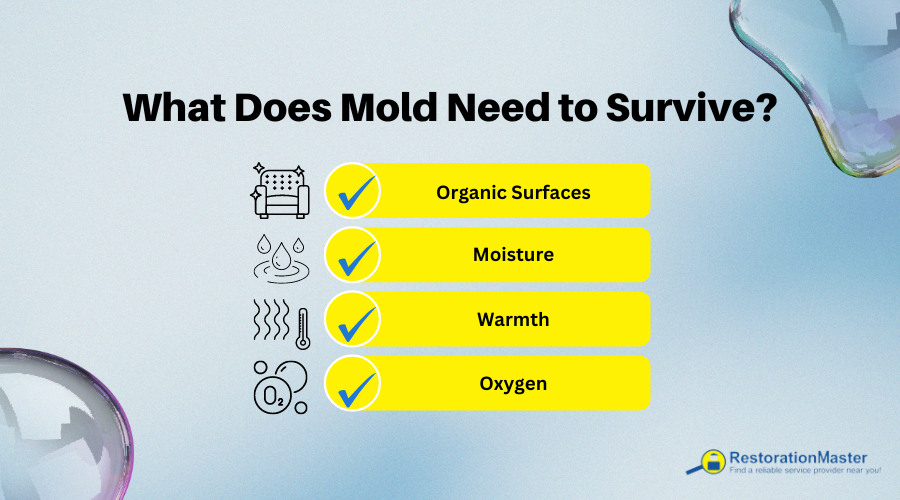
Prompt Repair of Leaks and Water Damage
In my professional practice, I’ve learned that the prompt repair of leaks and water damage is non-negotiable in the fight against black moldMold is a type of fungus that grows in damp or humid conditi... More. Immediate action to fix plumbing leaks or remediate damage from a broken pipe can greatly reduce the opportunity for moldMold is a type of fungus that grows in damp or humid conditi... More sporesSpores are microscopic reproductive units of fungi or mold t... More to settle and multiply. Integrating an air filter or vacuum with a HEPA scrubber during clean-up can capture airborne allergens and moldMold is a type of fungus that grows in damp or humid conditi... More sporesSpores are microscopic reproductive units of fungi or mold t... More that might spread during the process, further protecting your home environment.
Keeping a vigilant eye for water stains on ceilings, walls, or floors is a vital step; they often indicate the earliest stages of water damage. If such signs are detected, I advise homeowners to investigate the source and make necessary repairs without delay. The use of professional-grade equipment, such as a moisture meterA moisture meter is a device used to measure the moisture le... More or infrared camera, can aid in identifying hidden damp areas that are susceptible to moldMold is a type of fungus that grows in damp or humid conditi... More growth, ensuring that all affected materials are properly dried or replaced:
- Employ air filters or HEPA vacuums to limit moldMold is a type of fungus that grows in damp or humid conditi... More spore dispersion during clean-up.
- Routinely inspect home areas prone to moisture and address any signs of leaks promptly.
- Incorporate professional equipment to detect and resolve hidden moisture issues.
Utilizing Mold-Resistant Materials in Home Construction
In my experience as a professional in the field, utilizing mold-resistant materials during the construction or restorationRestoration is the process of returning a property to its pr... More of homes is a proactive measure against moldMold is a type of fungus that grows in damp or humid conditi... More damage. For example, when renovating or repairing a ceiling, the use of mold-resistant drywall or paint can significantly deter moldMold is a type of fungus that grows in damp or humid conditi... More growth in humid environments. It’s a strategy that may initially seem like a luxury but proves to be economical in the long run by reducing the need for frequent repairs or health concerns associated with exposure to toxic substancesToxic substances are chemicals or materials that can cause h... More like asbestos.
Integrating a humidifier into the HVAC system can also play a vital role in maintaining optimal humidityHumidity is the amount of moisture or water vapor present in... More levels and preventing moldMold is a type of fungus that grows in damp or humid conditi... More proliferation. In new construction, choosing materials that are specifically designed to resist moisture contributes to a more robust defense against the threat of moldMold is a type of fungus that grows in damp or humid conditi... More damage. Such preemptive steps, along with regular moisture checks and immediate restorationRestoration is the process of returning a property to its pr... More following water damage, ensure that homes remain safe and durable in face of moldMold is a type of fungus that grows in damp or humid conditi... More threats:
- Choose mold-resistant materials for areas prone to dampness, like bathrooms and basements.
- Install a humidifier to regulate indoor air qualityIndoor air quality (IAQ) refers to the condition of the air ... More and prevent mold-friendly conditions.
- Act swiftly on any signs of water damage to forestall moldMold is a type of fungus that grows in damp or humid conditi... More growth and protect the property.

Safe Techniques for Black Mold Removal
Tackling a moldMold is a type of fungus that grows in damp or humid conditi... More problem requires a strategic approach, especially when aiming to remove moldMold is a type of fungus that grows in damp or humid conditi... More safely and effectively from your home. Essential protective gear must always precede any moldMold is a type of fungus that grows in damp or humid conditi... More cleanup endeavor to safeguard health. In the following sections, I detail a step-by-step guide for those looking to undertake DIY mold removal and provide advice on recognizing when the issue necessitates professional intervention. Selecting a qualified mold remediationMold remediation is the process of identifying, removing, an... More specialist should not be taken lightly, as their expertise is often crucial to a thorough mitigation process. Through my professional lens, these insights are tailored to address each facet of moldMold is a type of fungus that grows in damp or humid conditi... More removal, ensuring a comprehensive strategy for maintaining a mold-free living space.
Necessary Protective Gear for Mold Cleanup
Embarking on moldMold is a type of fungus that grows in damp or humid conditi... More cleanup requires the right protective gear to ensure your safety and minimize exposure to harmful sporesSpores are microscopic reproductive units of fungi or mold t... More. When I engage in professional mold remediation, I always outfit myself with gloves, goggles, and an N-95 respirator or higher. These items are essential not only for personal protection but also to uphold the standards of home security systems that prioritize resident health.
Moreover, while handling moldMold is a type of fungus that grows in damp or humid conditi... More infestations, it’s prudent to cover all parts of the body with disposable overalls and use sturdy footwear that can be cleaned with a bleach solutionA solution is a homogeneous mixture of two or more substance... More afterward. In my experience, clients seeking professional mold remediationMold remediation is the process of identifying, removing, an... More services appreciate this level of caution, recognizing that it reflects a commitment to rigorous safety standards in professional moldMold is a type of fungus that grows in damp or humid conditi... More removal:
- Wear gloves, goggles, and a respirator for personal protection.
- Wear disposable overalls and cleanable footwear to prevent moldMold is a type of fungus that grows in damp or humid conditi... More sporesSpores are microscopic reproductive units of fungi or mold t... More from spreading.
- Adhere to safety protocols to maintain home security and health standards.

Step-by-Step Guide to DIY Mold Removal
When I advise clients on DIY basement mold removal, I emphasize starting with a thorough evaluation of the affected area. Before any moldMold is a type of fungus that grows in damp or humid conditi... More cleanup begins, ensure the space is well-ventilated and that you’re outfitted with protective gear — gloves, goggles, and a respirator. It’s crucial to contain the workspace to prevent cross-contaminationCross-contamination occurs when harmful substances, such as ... More, often by sealing off the area with plastic sheeting and securing it with tape.
In the process of removing moldMold is a type of fungus that grows in damp or humid conditi... More, I guide homeowners to gently scrub the moldy surfaces with a detergent solutionA solution is a homogeneous mixture of two or more substance... More, taking care not to disperse the moldMold is a type of fungus that grows in damp or humid conditi... More sporesSpores are microscopic reproductive units of fungi or mold t... More into the air. After thorough cleaning, it’s essential to let the area dry completely; this may involve using dehumidifiers or fans to accelerate the process. Understanding the potential impact of mold remediationMold remediation is the process of identifying, removing, an... More costs is also important, and I often discuss options with insurance agents to assess coverage before embarking on significant remediation efforts.
Determining When Professional Help Is Needed
In my experience, it’s often necessary to seek professional help when black moldMold is a type of fungus that grows in damp or humid conditi... More infestation in your home is extensive or if any household members experience severe health symptoms, such as shortness of breath or persistent irritation of the nose and the entire respiratory system. Professionals are equipped with advanced tools and techniques that go beyond DIY methods, ensuring a thorough eradication of moldMold is a type of fungus that grows in damp or humid conditi... More and restorationRestoration is the process of returning a property to its pr... More of safe living conditions. Moreover, they are trained to handle moldMold is a type of fungus that grows in damp or humid conditi... More removal with the necessary eye protection and safety measures to prevent health risks associated with moldMold is a type of fungus that grows in damp or humid conditi... More exposure.
If you notice condensation consistently forming on windows or walls, it may signal a systemic moisture problem that requires expert attention to prevent further moldMold is a type of fungus that grows in damp or humid conditi... More growth. I advocate that in situations where you’re uncertain about the scope of contaminationContamination is the presence of harmful or unwanted substan... More or how to address it effectively, calling in certified mold remediation specialists is the most prudent course of action. By doing so, you protect not only the structural integrity of your home but also the well-being of its inhabitants, ensuring that any remediation is handled safely and effectively.
Selecting a Qualified Mold Remediation Specialist
In selecting a qualified mold remediationMold remediation is the process of identifying, removing, an... More specialist, I prioritize candidates who display a comprehensive knowledge of antimicrobial treatments. The right professional will possess certifications that support their proficiency in mold remediationMold remediation is the process of identifying, removing, an... More, showcasing their ability to utilize protective gear like goggles and adhere to hygiene best practices. An expert’s ability to mitigateTo mitigate is to reduce or limit the severity of damage, ri... More health risks, such as cough and other mold-related symptoms, is paramount in my recommendation process.
It is vital to review the specialist’s previous work, and I look for extensive experience through practical examples of successful moldMold is a type of fungus that grows in damp or humid conditi... More removal projects. Seek professionals who provide a detailed plan of action for remediation, often available in pdf format, ensuring transparency and preparednessPreparedness is the state of being ready to respond to emerg... More. Here are key aspects to consider when choosing your mold remediation specialist:
- Verify certifications and knowledge of antimicrobial strategies.
- Assess the specialist’s adherence to safety and hygiene protocols, including the use of goggles.
- Request a comprehensive plan or pdf detailing their remediation approach.
These criteria foster trust in their skill to restore a healthy home environment effectively.
Post-Removal Practices to Prevent Mold from Returning
After tackling the hazard of black moldMold is a type of fungus that grows in damp or humid conditi... More in your home, maintaining a mold-free environment hinges on diligent upkeep and preventive strategies. Regular home maintenanceMaintenance is the routine care, inspection, and repair of a... More tips provide valuable guidance for this effort. MonitoringMonitoring is the ongoing observation and measurement of con... More moisture levels continuously is key to stopping moldMold is a type of fungus that grows in damp or humid conditi... More in its tracks, as is the use of air purifiers and dehumidifiers to maintain clean, dry indoor air. Periodic professional inspections ensure adherence to current construction standards and can uncover hidden issues, allowing you to adjust your policy on home care to mitigateTo mitigate is to reduce or limit the severity of damage, ri... More moldMold is a type of fungus that grows in damp or humid conditi... More risks effectively. Each forthcoming topic explores practical measures, including the use of detergents, designed to preserve the health and longevity of your living space.
Regular Home Maintenance Tips
In my line of work, I’ve learned that regular home maintenance is the first line of defense to prevent black moldMold is a type of fungus that grows in damp or humid conditi... More recurrence. This includes vigilant monitoringMonitoring is the ongoing observation and measurement of con... More for water leaks and promptly dryingDrying is the process of removing moisture from materials, s... More any damp areas, ensuring they don’t become a breeding ground for moldMold is a type of fungus that grows in damp or humid conditi... More species such as Aspergillus. Homeowners and landlords alike must treat any signs of moisture like a spongeA sponge is a porous material used to absorb liquids or clea... More: soak it up and eliminate it immediately, to reduce the possibility of mold-related health issues such as wheeze or other respiratory problems.
Furthermore, maintaining a clean home with regular dusting and vacuuming can significantly deter the return of moldMold is a type of fungus that grows in damp or humid conditi... More colonies. Here are a few specific tasks that help keep moldMold is a type of fungus that grows in damp or humid conditi... More at bay:
- Inspect plumbing fixtures regularly to catch leaks early.
- Change HVAC filters monthly to prevent spore distribution.
- Use mold-resistant products when possible during repairs or renovations.
These simple yet effective steps create a less hospitable environment for moldMold is a type of fungus that grows in damp or humid conditi... More and contribute to a healthier indoor atmosphere.
Monitoring Moisture Levels Continuously
In my professional capacity, I’ve witnessed the critical role that persistent monitoringMonitoring is the ongoing observation and measurement of con... More of moisture levels plays in securing a home against black moldMold is a type of fungus that grows in damp or humid conditi... More recurrence. Achieving and sustaining the right balance of humidityHumidity is the amount of moisture or water vapor present in... More is a cornerstone of environmental health in any living space. Homeowners should routinely use hygrometers to measure the moisture contentMoisture content is the amount of water present in a materia... More in the air, making adjustments when levels exceed recommendations as this can be a harbinger of moldMold is a type of fungus that grows in damp or humid conditi... More growth. This vigilance ensures that the color and texture of walls and ceilings remain unaffected by the insidious return of moldMold is a type of fungus that grows in damp or humid conditi... More, thus maintaining a safe and accessible environment for everyone.
I have found that the soils around a home’s foundation can also impact indoor moisture levels; hence, it’s necessary to consider external factors in moldMold is a type of fungus that grows in damp or humid conditi... More preventionPrevention refers to actions taken to reduce the likelihood ... More strategies. For example, high soil moisture can contribute to basement dampness, a condition that can invite moldMold is a type of fungus that grows in damp or humid conditi... More infestation. Employing methods to divert water away from your home, like proper landscaping and gutter maintenance, can directly influence the humidityHumidity is the amount of moisture or water vapor present in... More within and preserve the integrity of your living conditions. These actions exhibit a proactive stance in preserving the home’s environmental health, ensuring its longevity and the occupants’ comfort.
Incorporating Air Purifiers and Dehumidifiers
In my professional assessments, installing air purifiers and dehumidifiers can significantly bolster the defenses of a home against the recurrence of moldMold is a type of fungus that grows in damp or humid conditi... More, particularly black moldMold is a type of fungus that grows in damp or humid conditi... More and wood decay fungiFungi are a group of organisms, including mold, mildew, and ... More like Serpula lacrymans. The use of devices that generate ozone, for example, should be approached with understanding of guidelines provided by the American Industrial Hygiene Association, ensuring all safety protocols for occupational health are followed. These devices, when used correctly, help in decomposing moldMold is a type of fungus that grows in damp or humid conditi... More sporesSpores are microscopic reproductive units of fungi or mold t... More, thus contributing to a cleaner and healthier home environment.
Regular use of dehumidifiers also aids in creating conditions less favorable for moldMold is a type of fungus that grows in damp or humid conditi... More growth by maintaining indoor humidityHumidity is the amount of moisture or water vapor present in... More levels within the ideal range. Aligning with recommendations from the National Institute for Occupational Safety and Health, I integrate these appliances into my routine to keep the air in my clients’ homes dry and safe. Here are steps I personally take to mitigateTo mitigate is to reduce or limit the severity of damage, ri... More moldMold is a type of fungus that grows in damp or humid conditi... More recurrence effectively:
- Consult the American Industrial Hygiene Association for best practices on ozone generators.
- Install dehumidifiers to manage indoor humidityHumidity is the amount of moisture or water vapor present in... More, referring to guidelines from the National Institute for Occupational Safety and Health.
- Ensure these appliances are part of an overall mold-prevention strategy that encompasses monitoringMonitoring is the ongoing observation and measurement of con... More and maintenanceMaintenance is the routine care, inspection, and repair of a... More.
By adhering to these protocols, I strive to protect homes from future infestations and preserve the health of their occupants.
Scheduling Periodic Professional Inspections
As someone deeply entrenched in the practice of maintaining healthy living spaces, I recommend scheduling periodic professional inspections as a cornerstone of any comprehensive moldMold is a type of fungus that grows in damp or humid conditi... More preventionPrevention refers to actions taken to reduce the likelihood ... More plan. These examinations, undertaken by experts who are well-versed in standards set by the American Conference of Governmental Industrial Hygienists, can reveal the earliest signs of moldMold is a type of fungus that grows in damp or humid conditi... More resurgence, including traces of problematic varieties such as Alternaria. By ensuring that your disaster recovery efforts after black moldMold is a type of fungus that grows in damp or humid conditi... More contaminationContamination is the presence of harmful or unwanted substan... More are complete, and that the interior design of your home does not contribute to moldMold is a type of fungus that grows in damp or humid conditi... More growth, these inspections offer peace of mind and an extra layer of defense against future infestations.
Moreover, the importance of accessing credible information via reliable sources, such as the official websites of mold remediation organizations, cannot be overstated. These inspections not only verify that previous moldMold is a type of fungus that grows in damp or humid conditi... More removal actions have been successful but also help in devising tailored strategies to keep homes mold-free. Here’s a step-by-step approach to keeping your home under vigilant watch against moldMold is a type of fungus that grows in damp or humid conditi... More threats:
- Consult with professionals affiliated with the American Conference of Governmental Industrial Hygienists.
- Regularly review updated online resourcesResources include tools, personnel, equipment, and materials... More on moldMold is a type of fungus that grows in damp or humid conditi... More preventionPrevention refers to actions taken to reduce the likelihood ... More and interior design adjustments.
- Implement recommended disaster recovery steps post-removal to prevent the return of molds like Alternaria.
Understanding Legal and Insurance Implications
As I delve into the complexities of black moldMold is a type of fungus that grows in damp or humid conditi... More mitigation, I recognize that certain legal and insurance aspects cannot be overlooked. These include understanding homeowner’s insuranceHomeowner’s insurance is a policy that provides financial ... More coverage for moldMold is a type of fungus that grows in damp or humid conditi... More damage, clarifying both tenant and landlord responsibilities regarding moldMold is a type of fungus that grows in damp or humid conditi... More, and the importance of documenting moldMold is a type of fungus that grows in damp or humid conditi... More issues for legal purposes. Armed with a chlorine solutionA solution is a homogeneous mixture of two or more substance... More, protective gear, and a trusty moisture meterA moisture meter is a device used to measure the moisture le... More, it’s essential to consider these factors when tackling moldMold is a type of fungus that grows in damp or humid conditi... More, which often thrives on organic matter in damp environments and can be as stubborn and harmful as a virus in your home. Hence, I’ll provide pragmatic insights into each area, emphasizing the necessity for thorough documentation and knowledge of insurance policies.
Homeowner’s Insurance Coverage for Mold Damage
When addressing moldMold is a type of fungus that grows in damp or humid conditi... More damage within homes, it’s important for homeowners to thoroughly review their insurance policies. Many insurance providers have specific guidelines and limitations when it comes to mold-related coverage, often only covering moldMold is a type of fungus that grows in damp or humid conditi... More damage if it’s a result of a ‘covered peril’. Having this information on hand allows one to navigate potential claims with more confidence and precision, particularly in understanding what remediation costs may or may not be included.
From my first-hand experience, I’ve noticed that proactively speaking with an insurance agent can clarify gray areas around moldMold is a type of fungus that grows in damp or humid conditi... More damage coverage. It’s crucial for homeowners to ask detailed questions regarding their policy’s scope, including any endorsements that might enhance protection against moldMold is a type of fungus that grows in damp or humid conditi... More damages. This level of insight into your coverage can prevent unexpected out-of-pocket expenses during the moldMold is a type of fungus that grows in damp or humid conditi... More mitigation process, enabling a more informed and financially secure approach to resolving these issues.
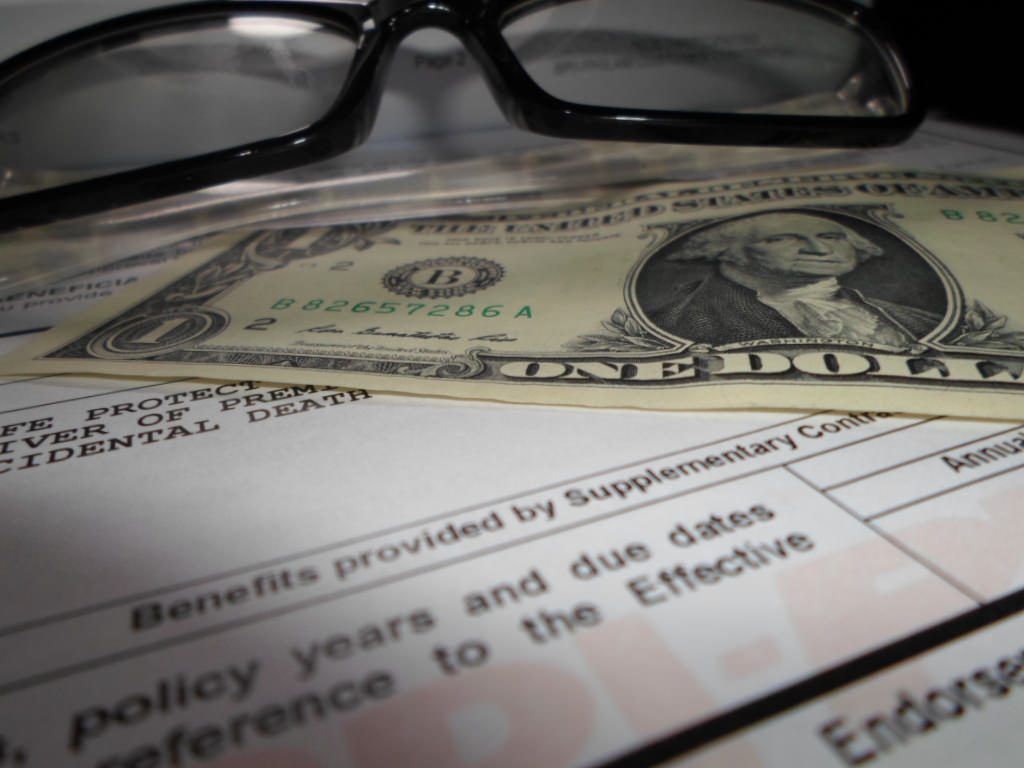
Tenant and Landlord Responsibilities Regarding Mold
As a moldMold is a type of fungus that grows in damp or humid conditi... More mitigation specialist, I’ve seen firsthand the importance of clearly defined responsibilities when dealing with black mold issues within rental properties. Tenants are generally responsible for maintaining cleanliness and reporting mold-related problems promptly, while landlords must address reported issues efficiently to ensure a safe living environment. It is essential for both parties to understand and adhere to these roles to effectively mitigateTo mitigate is to reduce or limit the severity of damage, ri... More moldMold is a type of fungus that grows in damp or humid conditi... More risks in the home.
From my experience, landlords are obliged to provide habitable housing, which includes being proactive in preventing moldMold is a type of fungus that grows in damp or humid conditi... More growth by attending to leaks and dampness and responding to moldMold is a type of fungus that grows in damp or humid conditi... More concerns rigorously. When tenants fulfill their duty of keeping the space ventilated and moisture-free, it creates a cooperative atmosphere that can dramatically reduce the presence and impact of black moldMold is a type of fungus that grows in damp or humid conditi... More. This collaborative effort is vital for maintaining the integrity and safety of the rental property.
Documenting Mold Issues for Legal Purposes
In handling moldMold is a type of fungus that grows in damp or humid conditi... More issues, documenting every detail from the outset is a practice I cannot emphasize enough. From the first signs of black moldMold is a type of fungus that grows in damp or humid conditi... More in your home, take photographs, keep a log of communications related to the discovery, and record any steps taken to address the problem. This paper trail is not only critical for insurance purposes but also serves as an indispensable record if legal actions become necessary due to disputes or health concerns arising from exposure.
During mold remediation, I meticulously compile a comprehensive dossier that includes moldMold is a type of fungus that grows in damp or humid conditi... More assessment reports, receipts for repairs, and any correspondence with remediation experts. As someone well-versed in the legal ramifications of moldMold is a type of fungus that grows in damp or humid conditi... More infestations, I understand the importance of such documents in proving due diligence and responsibility in the mitigation process. Homeowners should always safeguard this information, which can substantiate claims and delineate accountability in residential moldMold is a type of fungus that grows in damp or humid conditi... More cases.
Frequently Asked Questions About Black Mold Mitigation
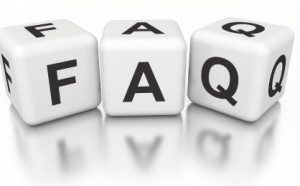 Now that we’ve explored detailed mitigation strategies, let’s address some common inquiries surrounding black moldMold is a type of fungus that grows in damp or humid conditi... More in homes. Can Black MoldMold is a type of fungus that grows in damp or humid conditi... More be completely eliminated? How does it affect vulnerable individuals, particularly pets and children? We’ll delve into the efficacy of long-term moldMold is a type of fungus that grows in damp or humid conditi... More preventionPrevention refers to actions taken to reduce the likelihood ... More solutions and discuss whether moldMold is a type of fungus that grows in damp or humid conditi... More testing is an essential step before and after the remediation process. These questions are crucial in understanding the full scope of black moldMold is a type of fungus that grows in damp or humid conditi... More management and ensuring a healthy living environment.
Now that we’ve explored detailed mitigation strategies, let’s address some common inquiries surrounding black moldMold is a type of fungus that grows in damp or humid conditi... More in homes. Can Black MoldMold is a type of fungus that grows in damp or humid conditi... More be completely eliminated? How does it affect vulnerable individuals, particularly pets and children? We’ll delve into the efficacy of long-term moldMold is a type of fungus that grows in damp or humid conditi... More preventionPrevention refers to actions taken to reduce the likelihood ... More solutions and discuss whether moldMold is a type of fungus that grows in damp or humid conditi... More testing is an essential step before and after the remediation process. These questions are crucial in understanding the full scope of black moldMold is a type of fungus that grows in damp or humid conditi... More management and ensuring a healthy living environment.
Can Black MoldMold is a type of fungus that grows in damp or humid conditi... More Be Completely Eliminated?
The question of whether black moldMold is a type of fungus that grows in damp or humid conditi... More can be completely eliminated is a common concern for homeowners. In my professional experience, while total eradication of moldMold is a type of fungus that grows in damp or humid conditi... More sporesSpores are microscopic reproductive units of fungi or mold t... More from the environment is not feasible due to their omnipresence, effectively mitigating black moldMold is a type of fungus that grows in damp or humid conditi... More to safe levels within the home is entirely achievable. Employing thorough remediation techniques and ongoing preventive measures significantly reduces the risk of harmful moldMold is a type of fungus that grows in damp or humid conditi... More exposure.
To ensure black moldMold is a type of fungus that grows in damp or humid conditi... More is managed effectively, it’s imperative to follow a structured process: assess moisture sources, remove contaminated materials safely, cleanse affected areas with EPA-recommended fungicides, and maintain low humidityHumidity is the amount of moisture or water vapor present in... More levels. Here are key steps in the mitigation sequenceSequence is the specific order or progression of steps taken... More that, when executed correctly, establish a mold-resistant environment:
- Identify and repairRepair is the act of fixing or restoring damaged property, m... More all moisture intrusion points.
- Discard porousPorous describes a material that contains small openings or ... More materials that harbor moldMold is a type of fungus that grows in damp or humid conditi... More growth.
- Treat the affected surfaces with proper mold-killing solutions.
- Keep indoor humidityHumidity is the amount of moisture or water vapor present in... More below 50% to inhibit moldMold is a type of fungus that grows in damp or humid conditi... More development.
By persistently adhering to these practices, the recurrence of black moldMold is a type of fungus that grows in damp or humid conditi... More can generally be kept at bay, safeguarding your home’s health and air quality.
How Does Black MoldMold is a type of fungus that grows in damp or humid conditi... More Affect Pets and Children?
In my professional assessments, I’ve found that black moldMold is a type of fungus that grows in damp or humid conditi... More can be particularly harmful to pets and children, whose immune systems may not be as robust as adults. Both are sensitive groups and can display more pronounced reactions to moldMold is a type of fungus that grows in damp or humid conditi... More exposure, including respiratory distress and allergic symptoms such as sneezing, coughing, or skin rashes. It’s essential to keep living environments free of moldMold is a type of fungus that grows in damp or humid conditi... More for their safety and well-being.
Securing a healthy space for our loved ones means understanding that pets and children are often closer to the ground where moldMold is a type of fungus that grows in damp or humid conditi... More sporesSpores are microscopic reproductive units of fungi or mold t... More can settle, leading to higher exposure levels. Vigilance is key; if symptoms like unexplained lethargy in pets or breathing difficulties in children emerge, consider these as potential indicators of mold-related health effects:
- Increased allergic reactions or respiratory symptoms in children.
- Lethargy or illness in pets that spend time in mold-prone areas.
What Are the Long-Term Solutions for MoldMold is a type of fungus that grows in damp or humid conditi... More PreventionPrevention refers to actions taken to reduce the likelihood ... More?
In addressing long-term mold prevention, I stress the importance of routine maintenanceMaintenance is the routine care, inspection, and repair of a... More and moisture control, which serve as the bedrock of a mold-resistant home. Regular inspections of plumbing, roofing, and HVAC systems can uncover potential issues before they escalate into mold-friendly environments. Adopting this approach, alongside immediate remediation of any water damage, keeps the home dry and deters moldMold is a type of fungus that grows in damp or humid conditi... More growth.
Equally critical in the quest for longevity in moldMold is a type of fungus that grows in damp or humid conditi... More preventionPrevention refers to actions taken to reduce the likelihood ... More is the incorporation of materials and designs that inherently resist moisture. When renovating or constructing new spaces, I recommend using mold-resistant drywall, paint, and flooring to provide an added layer of protection against moldMold is a type of fungus that grows in damp or humid conditi... More infestations. The following steps reflect the story of effective long-term moldMold is a type of fungus that grows in damp or humid conditi... More preventionPrevention refers to actions taken to reduce the likelihood ... More:
- Conduct periodic maintenanceMaintenance is the routine care, inspection, and repair of a... More checks on the home’s structural and environmental systems to catch moisture issues early.
- Opt for mold-resistant construction materials during renovation or building to create an inhospitable environment for moldMold is a type of fungus that grows in damp or humid conditi... More growth.
Is MoldMold is a type of fungus that grows in damp or humid conditi... More Testing Necessary Before and After Remediation?
As part of a thorough approach to black moldMold is a type of fungus that grows in damp or humid conditi... More mitigation, I consider mold testing both before and after remediation essential. Prior testing identifies the moldMold is a type of fungus that grows in damp or humid conditi... More species and contaminationContamination is the presence of harmful or unwanted substan... More extent, ensuring that the remediation process is appropriately planned and executed. Post-remediation testing, meanwhile, validates the effectiveness of the cleanup efforts, confirming that indoor moldMold is a type of fungus that grows in damp or humid conditi... More levels have been reduced to acceptable levels, safeguarding the health of the home’s inhabitants.
Engaging a professional for moldMold is a type of fungus that grows in damp or humid conditi... More testing provides a detailed understanding of the home’s moldMold is a type of fungus that grows in damp or humid conditi... More situation and aids in documenting the issue for any necessary insurance claims or future property transactions. Through this process, homeowners gain peace of mind knowing that their environment is safe and that the remediation efforts have been successful:
- Before remediation: Testing establishes the baseline moldMold is a type of fungus that grows in damp or humid conditi... More levels and species present.
- After remediation: Testing confirms the cleanup’s success and ensures the living space is safe.
What health risks do homes with black moldMold is a type of fungus that grows in damp or humid conditi... More pose?
Black moldMold is a type of fungus that grows in damp or humid conditi... More in homes can leadLead is a heavy metal that can be toxic to humans, especiall... More to serious health risks, including respiratory issues, allergic reactions, chronic fatigue, and in severe cases, neurological problems and toxicity.
How can I identify the sources of moisture causing moldMold is a type of fungus that grows in damp or humid conditi... More?
To pinpoint moisture sources causing moldMold is a type of fungus that grows in damp or humid conditi... More in your home, inspect for leaks, condensation, and poor ventilationVentilation is the process of exchanging or circulating air ... More, especially in damp areas like bathrooms, kitchens, and basements.
Are there any effective DIY methods to prevent moldMold is a type of fungus that grows in damp or humid conditi... More growth?
Preventing moldMold is a type of fungus that grows in damp or humid conditi... More growth effectively at home can be achieved by maintaining low humidityHumidity is the amount of moisture or water vapor present in... More, ensuring proper ventilationVentilation is the process of exchanging or circulating air ... More, and promptly addressing water leaks.
What precautions should I take when removing black moldMold is a type of fungus that grows in damp or humid conditi... More myself?
Removing black moldMold is a type of fungus that grows in damp or humid conditi... More requires safety gear: gloves, N95 mask, goggles, and ensuring proper ventilationVentilation is the process of exchanging or circulating air ... More to reduce health risks.
Can moldMold is a type of fungus that grows in damp or humid conditi... More come back after professional remediation?
MoldMold is a type of fungus that grows in damp or humid conditi... More can recur after professional remediation if the underlying moisture issues aren’t fully resolved and the area remains conducive to moldMold is a type of fungus that grows in damp or humid conditi... More growth.
Conclusion
Effective mitigation of black moldMold is a type of fungus that grows in damp or humid conditi... More is essential for maintaining healthy indoor living environments and safeguarding both structural integrity and personal well-being. Regular surveillance for moisture and prompt remediation of leaks, combined with controlled humidityHumidity is the amount of moisture or water vapor present in... More and robust ventilationVentilation is the process of exchanging or circulating air ... More strategies, form the foundation of proactive black moldMold is a type of fungus that grows in damp or humid conditi... More preventionPrevention refers to actions taken to reduce the likelihood ... More. Incorporating mold-resistant materials during construction or renovation further secures homes against the insidious nature of moldMold is a type of fungus that grows in damp or humid conditi... More infestations. Ultimately, a comprehensive approach to black moldMold is a type of fungus that grows in damp or humid conditi... More management, including professional inspections and moldMold is a type of fungus that grows in damp or humid conditi... More testing, ensures ongoing protection and peace of mind for homeowners.











